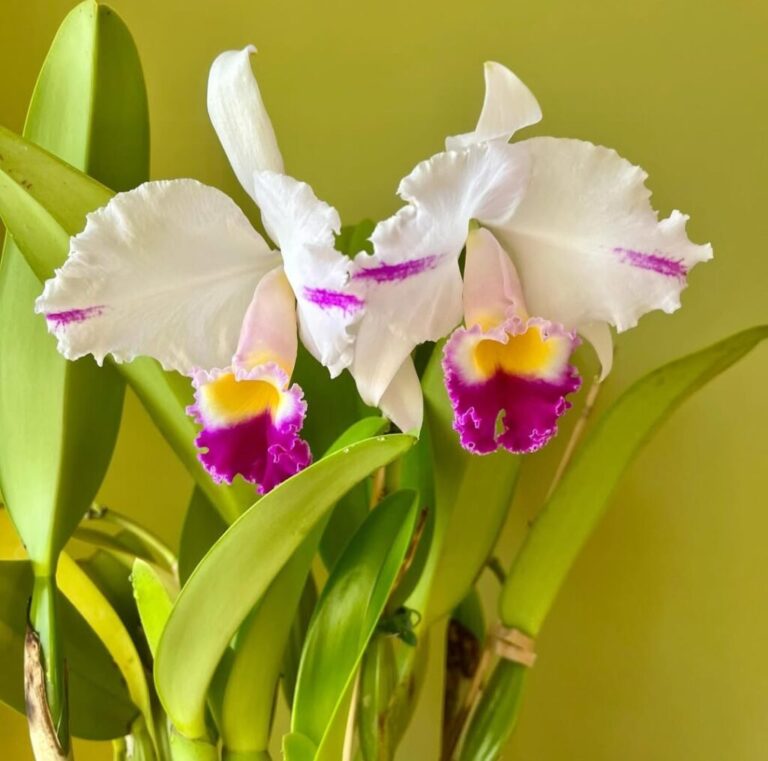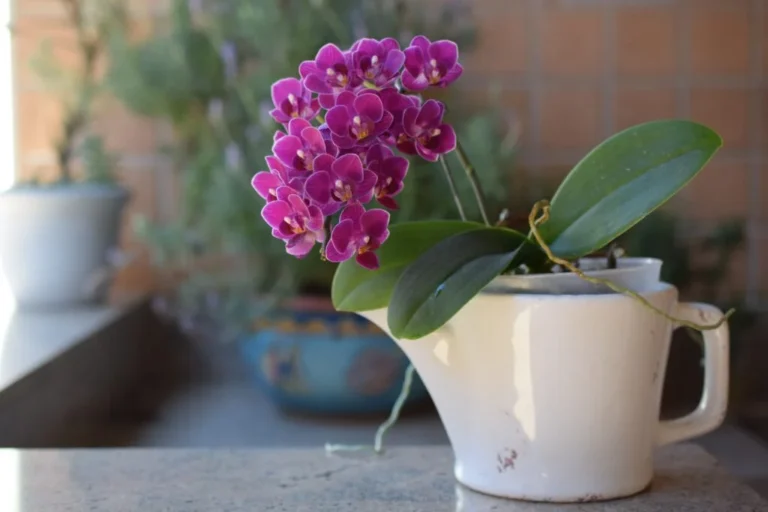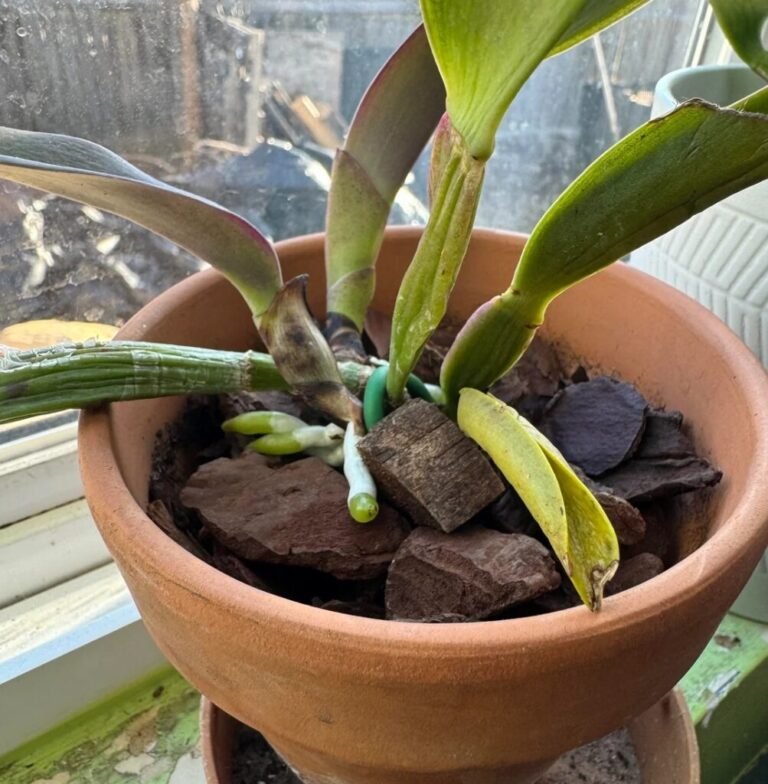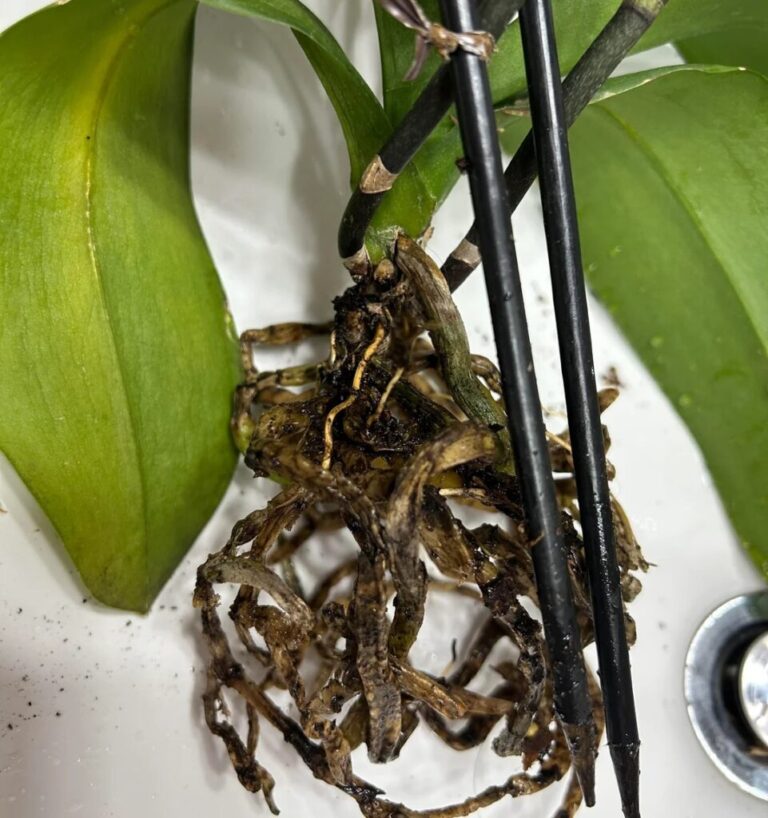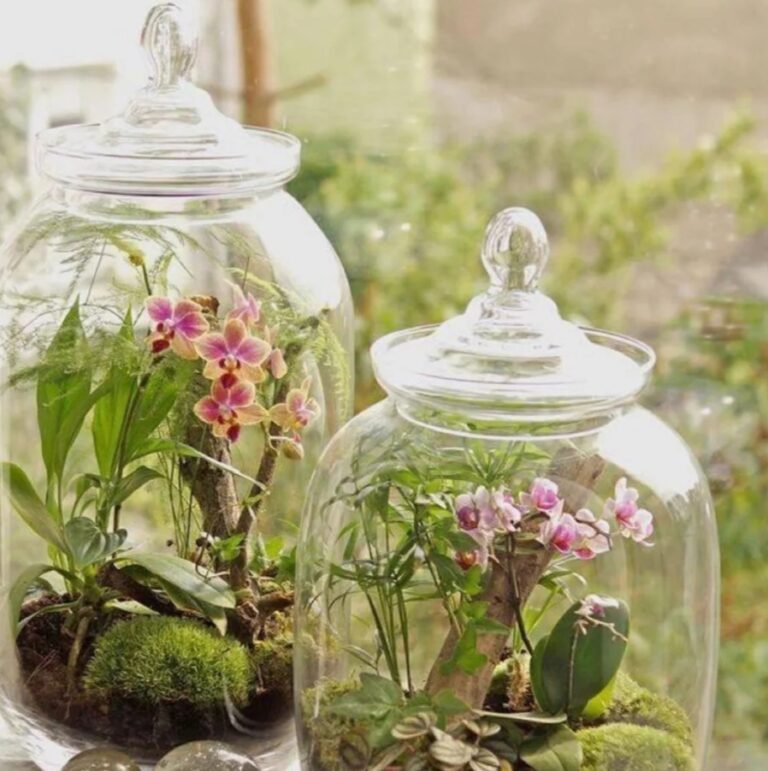- 1 1. Provide Bright, Indirect Sunlight
- 2 2. Master the Right Watering Technique
- 3 3. Maintain High Humidity (60–80%)
- 4 4. Fertilize Regularly for Vibrant Blooms
- 5 5. Choose the Right Potting Method (or No Pot at All!)
- 6 6. Maintain Optimal Temperature for Growth
- 7 7. Ensure Good Air Circulation
- 8 8. Recognize and Treat Common Vanda Problems
- 9 9. Propagation: Growing More Vanda Orchids
- 10 10. Special Winter Care Tips
- 11 Final Thoughts
Vanda orchids are among the most breathtaking and exotic orchids, known for their vibrant, long-lasting blooms and striking aerial roots. Whether you’re a beginner or an experienced grower, mastering Vanda orchid care is essential to keep these beauties thriving year-round. Unlike other orchids, Vandas demand a unique balance of light, humidity, and watering to flourish. But don’t worry—once you understand their needs, these orchids reward you with dazzling flowers that can bloom multiple times a year.
In this guide, we’ll uncover the 10 best tips for thriving Vanda orchids, from perfecting their watering routine to ensuring they get the right amount of light and nutrients. Whether you grow them in a basket, mounted, or in a pot, these expert tips will help you unlock the secrets to healthier roots, stronger growth, and stunning floral displays. Let’s dive into the world of Vanda orchids and learn how to cultivate them like a pro!
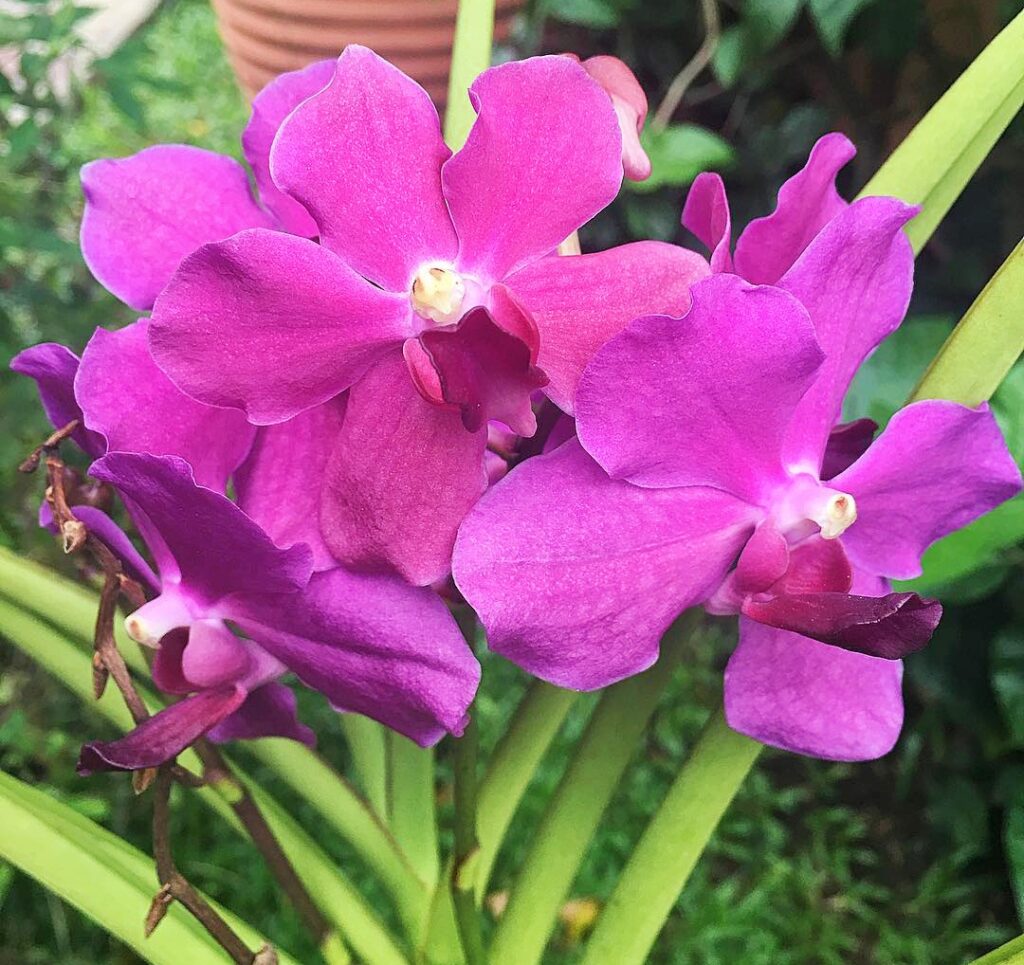
Vanda Orchid Profile
| Feature | Details |
|---|---|
| Scientific Name | Vanda spp. |
| Common Name | Vanda Orchid |
| Plant Type | Epiphytic Orchid |
| Flower Colors | Blue, Purple, Pink, Orange, Yellow, White |
| Blooming Season | Year-round (with proper care) |
| Light Needs | Bright, indirect sunlight (6–8 hours/day) |
| Watering | Daily soaking (warm months), 2–3 times/week (cool months) |
| Humidity | 60–80% |
| Temperature | 65–90°F (18–32°C) |
| Fertilization | Weekly, balanced orchid fertilizer (20-20-20) |
| Potting | Bare-root, hanging baskets, or mounted |
| Propagation | Keikis (baby plants) |
1. Provide Bright, Indirect Sunlight
Vanda orchids thrive in high light levels, but too much direct sunlight can burn their leaves, while too little can hinder blooming. Ideally, they should be placed in a spot with bright, indirect sunlight for at least 6–8 hours per day. East or south-facing windows are best, but a sheer curtain can help diffuse harsh rays. If growing Vandas outdoors, place them under a tree or in a shaded greenhouse where they receive dappled light. Indoor growers can use full-spectrum grow lights for 12–14 hours daily to ensure adequate exposure.
Quick Tip: ☘️If your Vanda’s leaves appear yellow-green, it’s getting enough light. If they are dark green, it needs more. Always adjust placement accordingly.
2. Master the Right Watering Technique
Vanda orchids have aerial roots that need frequent hydration but must dry between waterings to prevent rot. Unlike potted orchids, they absorb moisture directly from the air and water, making their watering needs unique. If growing them bare-root, soak their roots in water for 15–30 minutes daily during warm months, ensuring they fully hydrate before drying out. In cooler months, reduce watering to every 2–3 days to prevent root rot. For basket-grown Vandas, water thoroughly when the roots turn silvery-white, ensuring they are completely wet before allowing them to dry.
Avoid These Mistakes: Always water in the morning so roots dry by night, preventing fungal infections. Never use cold water; instead, opt for room-temperature rainwater or distilled water. Mist the roots between soakings to maintain moisture levels without overwatering.
3. Maintain High Humidity (60–80%)
Vanda orchids require high humidity to stay healthy and thrive. In their natural habitat, they absorb moisture from the air, so indoor growers must replicate these conditions. Ideally, humidity levels should be maintained between 60–80%, especially if growing them indoors. Using a humidity tray with pebbles and water underneath the orchid can help maintain moisture levels. A humidifier is another effective method, especially in dry climates or during winter when indoor heating reduces humidity. Grouping plants together can also create a beneficial microclimate that helps retain moisture.
Temperature Guide:
🌞 Daytime: 75–90°F (24–32°C)
🌙 Nighttime: 60–70°F (16–21°C)
Warning: If humidity is too low, Vanda roots will dry out too quickly, leading to dehydration. If humidity is too high without proper airflow, fungus and rot can develop. Balance is key.
4. Fertilize Regularly for Vibrant Blooms
Vanda orchids are heavy feeders and require consistent fertilization to produce lush foliage and spectacular flowers. A balanced orchid fertilizer (20-20-20) diluted to half strength should be applied weekly for optimal growth. During the flowering season, switch to a high-phosphorus formula (10-30-10) to encourage blooming. Regular feeding ensures healthy leaves, strong root development, and long-lasting flowers. To prevent fertilizer salt buildup, flush the roots with plain water at least once a month.
Pro Tip:☘️ Weak, yellowing leaves often indicate nutrient deficiencies. Adjust your fertilization routine if you notice these signs, ensuring the orchid gets the nutrients it needs for vigorous growth.
5. Choose the Right Potting Method (or No Pot at All!)
Unlike many orchids, Vandas do not require traditional potting media such as bark or sphagnum moss. They grow best bare-root, mounted, or in slotted baskets that allow their aerial roots to breathe. Hanging baskets allow roots to grow freely and improve air circulation, making them a preferred option for many growers. Mounting on wood or slabs mimics natural conditions but requires frequent misting to prevent dehydration. Some growers use clay pots with large holes, but this method is best for smaller Vandas.
Mistake to Avoid: Never use regular potting soil, as it retains too much moisture and suffocates the roots, leading to rot. Always choose a method that ensures good air circulation.
6. Maintain Optimal Temperature for Growth
Vanda orchids prefer warm temperatures, with an ideal range between 65–90°F (18–32°C). These tropical plants do not tolerate cold temperatures well, and sudden drops can cause stress or damage. During the day, temperatures should remain between 75–90°F (24–32°C), while nighttime temperatures should not drop below 60–70°F (16–21°C). If growing outdoors, bring them inside if temperatures fall below 55°F (13°C) to protect them from cold damage.
Winter Care: Use grow lights or heating pads to maintain warmth indoors. If growing in a greenhouse, ensure it remains warm, especially at night.
Vanda Orchid Care Timetable
| Season | Light | Watering | Humidity | Fertilization | Special Care |
|---|---|---|---|---|---|
| Spring | Bright, indirect sunlight (6–8 hrs/day) | Soak roots daily | 60–80% | Weekly (20-20-20) | Increase airflow to prevent fungal infections |
| Summer | Bright, indirect sunlight (8–10 hrs/day) | Daily soaking + misting | 70–80% | Weekly (higher phosphorus for blooming) | Provide shade during peak sun hours |
| Fall | Bright light (6–8 hrs/day) | Reduce watering to 3–4 times/week | 60–70% | Weekly (balanced fertilizer) | Watch for keikis & repot if needed |
| Winter | Indirect sunlight (6 hrs/day) + grow lights if needed | Water 2–3 times/week | 50–60% | Every 2 weeks (low nitrogen formula) | Move indoors if below 55°F (13°C), reduce watering |
7. Ensure Good Air Circulation
Vandas need constant air movement to prevent fungal infections and keep their roots healthy. Stagnant air increases the risk of mold and rot, especially in humid conditions. To improve airflow, use a small fan in enclosed growing areas, especially if growing orchids indoors. Hanging Vandas in open spaces also helps natural air movement keep them healthy. Avoid placing them too close to other plants, as overcrowding can reduce ventilation.
If you notice mold or fungal spots on leaves or roots, immediately improve airflow. Proper ventilation is crucial for keeping Vandas healthy year-round.
8. Recognize and Treat Common Vanda Problems
1. Root Rot: Often caused by overwatering or poor airflow. Affected roots turn black and mushy.
✅ Fix it: Trim damaged roots, apply a fungicide, and improve air circulation.
2. Yellow Leaves: Usually due to too much direct sunlight or a nutrient imbalance.
✅ Fix it: Move the orchid to filtered light and adjust fertilization.
3. No Blooms: Caused by insufficient light, inadequate feeding, or improper watering.
✅ Fix it: Increase light exposure, use bloom-boosting fertilizer, and follow a consistent watering schedule.
9. Propagation: Growing More Vanda Orchids
Vanda orchids can be propagated through keikis (baby plants) that grow along the stem. These small offshoots are natural clones of the parent plant and can be separated when they have at least 3–4 roots. To propagate, carefully remove the keiki with sterile shears and plant it in a small basket, caring for it like a mature Vanda. With proper care, it will develop into a full-sized blooming orchid over time.
10. Special Winter Care Tips
Vandas need extra attention in winter to survive colder temperatures. When temperatures drop below 55°F (13°C), move them indoors or into a heated greenhouse. Reduce watering slightly to prevent root rot, but continue misting to maintain humidity. Grow lights can help compensate for reduced daylight hours. If your Vanda struggles in winter, wrapping aerial roots in sphagnum moss can help retain moisture without overwatering.
Bonus Tip: Avoid placing your Vanda near cold drafts or heating vents, as sudden temperature changes can cause stress and hinder growth.
Final Thoughts
Caring for Vanda orchids requires a balance of light, water, humidity, nutrients, and air circulation. Once you master these care essentials, your Vanda will reward you with breathtaking blooms year after year. Whether you’re growing them indoors or outdoors, following these best practices will help ensure your orchid thrives.
FAQs on Vanda Orchid Care
What is the best way to care for a Vanda orchid?
Vanda orchid care involves providing bright, indirect sunlight, high humidity, and consistent watering. These orchids thrive in well-ventilated areas with temperatures between 65-85°F (18-29°C). Proper Vanda orchid care also includes regular fertilization with a balanced orchid fertilizer.
How often should I water my Vanda orchid?
Proper Vanda orchid care requires watering 3–4 times a week in warm weather and reducing it to 1–2 times a week during colder months. If grown in a basket with bare roots, daily misting may be necessary.
What kind of light does a Vanda orchid need?
For optimal Vanda orchid care, these orchids need bright, indirect light. A south or east-facing window is ideal. If leaves turn yellow or reddish, the light might be too intense, requiring slight shading.
What is the best temperature for Vanda orchid care?
Vanda orchids prefer warm temperatures between 65-85°F (18-29°C). Proper Vanda orchid care includes keeping them away from cold drafts, as temperatures below 55°F (13°C) can damage the plant.
Do Vanda orchids need high humidity?
Yes, high humidity (50-80%) is essential for proper Vanda orchid care. If your home is dry, consider using a humidity tray or a humidifier to maintain the right conditions.
How do I fertilize a Vanda orchid?
Vanda orchid care requires regular feeding. Use a balanced orchid fertilizer (20-20-20) diluted to half strength once a week. Reduce feeding during winter when the plant is not actively growing.
Should I repot my Vanda orchid?
Repotting is rarely needed for Vanda orchid care since they grow well in baskets or hanging setups. If the roots outgrow the basket, you can move it to a larger one or simply trim dead roots
How do I encourage my Vanda orchid to bloom?
Proper Vanda orchid care includes providing enough light, maintaining warmth, and feeding regularly. If your orchid is not blooming, consider increasing light exposure or adjusting fertilizer with a higher phosphorus content.
Can Vanda orchids be grown indoors?
Yes, Vanda orchid care indoors is possible if you provide bright, indirect light, high humidity, and good air circulation. Placing them near a bright window or using artificial grow lights can help.
How do I prevent root rot in my Vanda orchid?
Vanda orchid care should include ensuring proper air circulation around the roots. Avoid overwatering, and let the roots dry out between watering sessions. If roots become mushy, trim the affected parts and adjust watering.
Do Vanda orchids need air circulation?
Yes, proper air circulation is essential for Vanda orchid care. Good airflow prevents fungal infections and promotes healthy root growth. Place your orchid in a well-ventilated area or use a fan if needed.
Can I mount my Vanda orchid on wood or a tree?
Absolutely! One of the best Vanda orchid care methods is growing them mounted on wood or trees, mimicking their natural habitat. Just ensure they receive sufficient moisture and light.
Why are my Vanda orchid’s leaves wrinkled?
Wrinkled leaves indicate dehydration, a common issue in Vanda orchid care. Increase watering frequency and ensure the roots are absorbing moisture properly.
How long do Vanda orchid flowers last?
With proper Vanda orchid care, blooms can last up to six weeks. Some varieties bloom multiple times a year if conditions are ideal.
How do I revive a dying Vanda orchid?
To revive a struggling plant, focus on essential Vanda orchid care steps: check root health, improve humidity, adjust watering, and ensure adequate light. Trimming dead roots and soaking the orchid in water can also help restore hydration.

